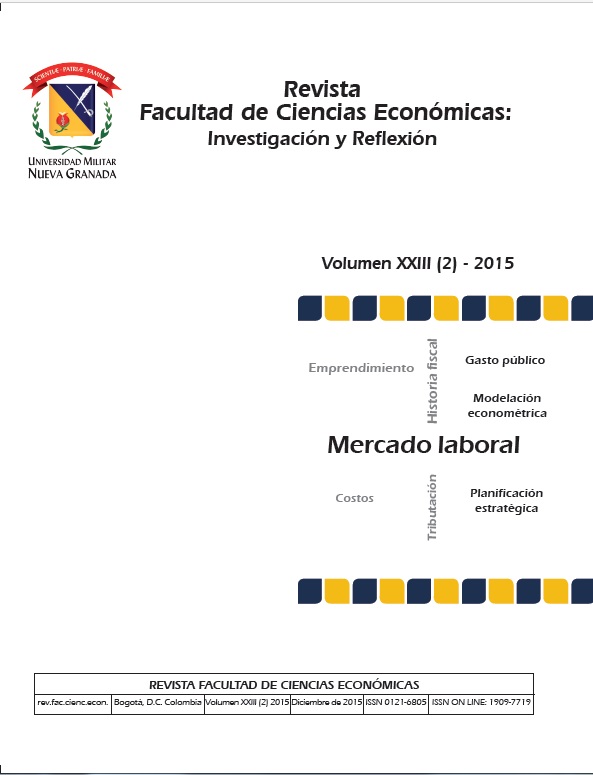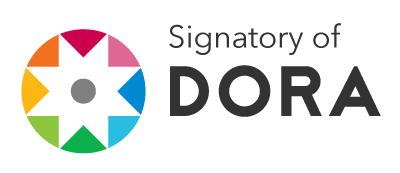Welfare alternative measurement: use of the welfare abbreviated index to the family budget survey in Venezuela
Abstract
The aim of this work is to calculate the welfare abbreviated index (IAB Spanish acronym) in order to describe the welfare profile done by The Third National Family Budget Survey of Venezuela (IIIº EPF Spanish acronym). Following the established methodology by its creators; improvements and incompatibilities were detected in the data. This led to the adjustment of the formulas originally proposed. The revised IAB versión was applied. As a result households enjoy in average 14% welfare; subsistence and protection are determining factors. Better placed households with less tan 5 members do not go beyond middle class. It includes more tan 30% remuneration rates and social welfare coverage, no illiterate population and a good education level. Socioeconomic class and “working hours” seem to mediate among expenditure indicators and the IAB. There isn´t much social inequality focused in the population´s first decile.Downloads
References
Banco Central de Venezuela - BCV (2004). Manual del encuestador EPFN Teórico.
Bufford, R, Paloutzian R. & Ellison, C. (1991). Norms for the spiritual well-being scale. Journal of Psychology and Theology, (19), 56-70.
Campos, M. L., & Ruiz, J. C. (2010). Propuesta de un índice de bienestar a partir de datos de la encuesta de presupuesto familiar. REVISTA BCV, XXVI(2), 63–85.
Di Filippo, A. (2012.). Fundamentos de un enfoque iberoamericano para la enseñanza de la responsabilidad social empresarial (RSE). Fondo Fiduciario España—PNUD “Hacia un Desarrollo Integrado e Inclusivo en América Latina y el Caribe.”
Gamboa, L. F., & Cortés, D. (1999). Una Discusión en torno al concepto de Bienestar (No. 1-nov. 1999) (p. 25). Bogotà: Universidad del Rosario. Retrieved from Gamboa & Cortes Una Discusión en torno al concepto.pdf.
Guerrero-Molina, P. (2005). Análisis del Consumo: Limitaciones y Omisiones de la Teoría Económica Neoclásica. Revista OIKOS, 20. Retrieved from http://edicionesucsh.cl/oikos/oikos20/20_03.pdf
Hagerty, M. R., Cummins, R. A., Ferriss, A. L., Land, K., Michalos, A. C., Peterson, M., … Vogel, J. (2001). Quality of Life Indexes for National Policy: Review and Agenda for Research. Social Indicators Research, 55(1), 1–96. http://doi.org/10.1023/A:1010811312332
Katona, G. (1974): «Psychology and Consumer Economics». Journal of Consumer Research, 1, 1-18.
León-Camacho, P. (2011, September 19). El PIB y más allá / Más allá del PIB… los avances recientes. Retrieved from http://www.cordanec.com/Descargas/Articulos%20de%20Cuentas%20Nacionales/M%C3%A1s%20all%C3%A1%20del%20PIB.pdf
Max-Neef, M. A., Elizalde, A., & Hopenhayn, M. (1986). Desarrollo a Escala Humana una opcion para el futuro. Centro de Alternativas de Desarrollo,CEPAUR. Retrieved from http://www.unibague.edu.co/sitios/ecologia/Desarrollo%20a%20escala%20humana.pdf
Méndez-Castellano, H. (1994). Sociedad y Estratificación. Método Graffar-Méndez Castellano. Caracas, Venezuela: Fundacredesa.
Organización para la cooperación y el Desarrollo Económico. (2013, September 9). OECD Better Life Initiative. Retrieved March 24, 2013, from http://www.oecdbetterlifeindex.org/es/
Osberg, L., & Sharpe, A. (2003). Human Well-being and Economic Well-being: What Values Are Implicit in Current Indices? (Research Report) (p. 60). Centre for the Study of Living Standards. Retrieved from http://dspace.cigilibrary.org/jspui/handle/123456789/25041
Sen, A. (2000). Desarrollo y libertad. (E. Rabasco & L. Toharia, Trans.). México; Barcelona: Planeta. Retrieved from http://www.ccee.edu.uy/ensenian/catgenyeco/Materiales/2011-12-07%20III2AmartyaSenCap8LaAgenciadelasMujeresyelCambioSocial.pdf
Silva-Colmenares, J. (2008). Felicidad: La Evolución Como Categoría Científica y la Relación con el Desarrollo. Revista de La Información Básica CANDANE, 3(1), 62–77.
Stiglitz, J., Sen, A., & Fitoussi, J.-P. (2008). Informe de la Comisión sobre la Medición del Desarrollo Económico y del Progreso Social (p. 17). Retrieved from http://www.ambafrance-es.org/france_espagne/IMG/pdf/Commission_Stiglitz_ES.pdf
Toro Hardy, J. (1993). Fundamentos de teoría económica: un análisis de la política económica venezolana. Caracas: Editorial Panapo.
UNDP’s Human Development Report Office (HDRO). (2013). INFORME SOBRE DESARROLLO HUMANO 2013 El despertar del Sur Global El progreso humano en un mundo diverso (Notas Técnicas) (p. 8). PNUD. Retrieved from http://hdr.undp.org/en/media/HDR%202013%20technical%20notes%20ES.pdf
Vasconez, A. (2003). Niñez a medias, futuro a medias: trabajo infantil y juvenil en Ecuador (p. 49). Quito: FLACSO. Retrieved from Vasconez ojo pg4.pdf.
WHOQOL GROUP (1995). The World Health Organization Quality of life assessment (WHOQOL). Position Paper from the World Health Organization. Soc. Sci. Med., 41(10), 1.403-1.409.
World Commission on Environment and Development. (1987). Our common future. Oxford ; New York: Oxford University Press.











